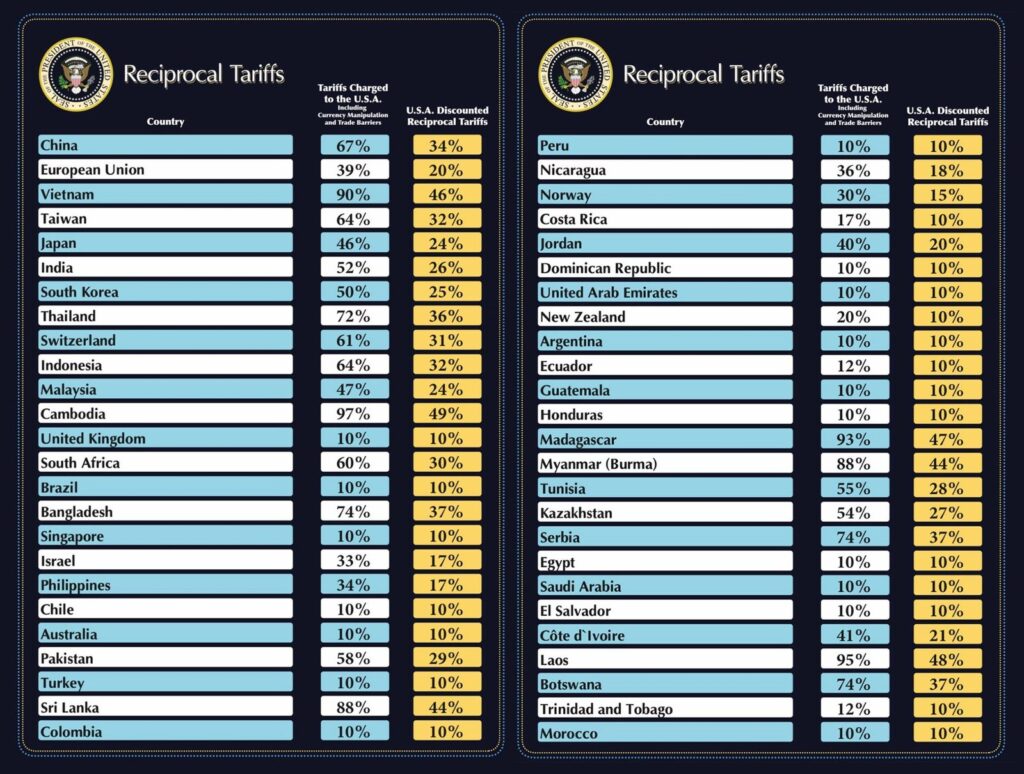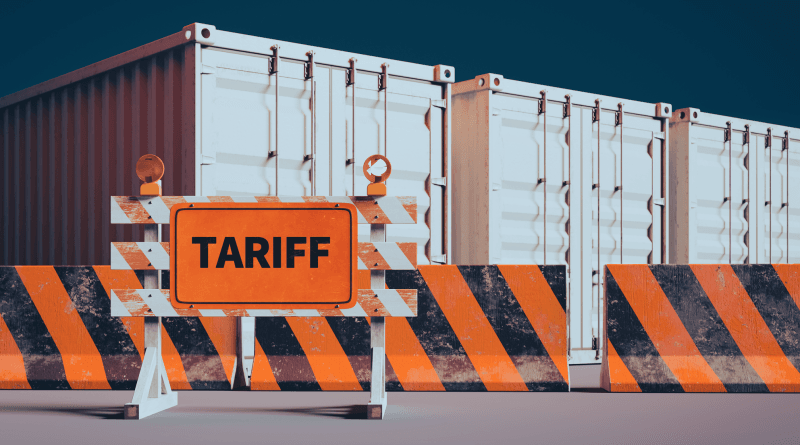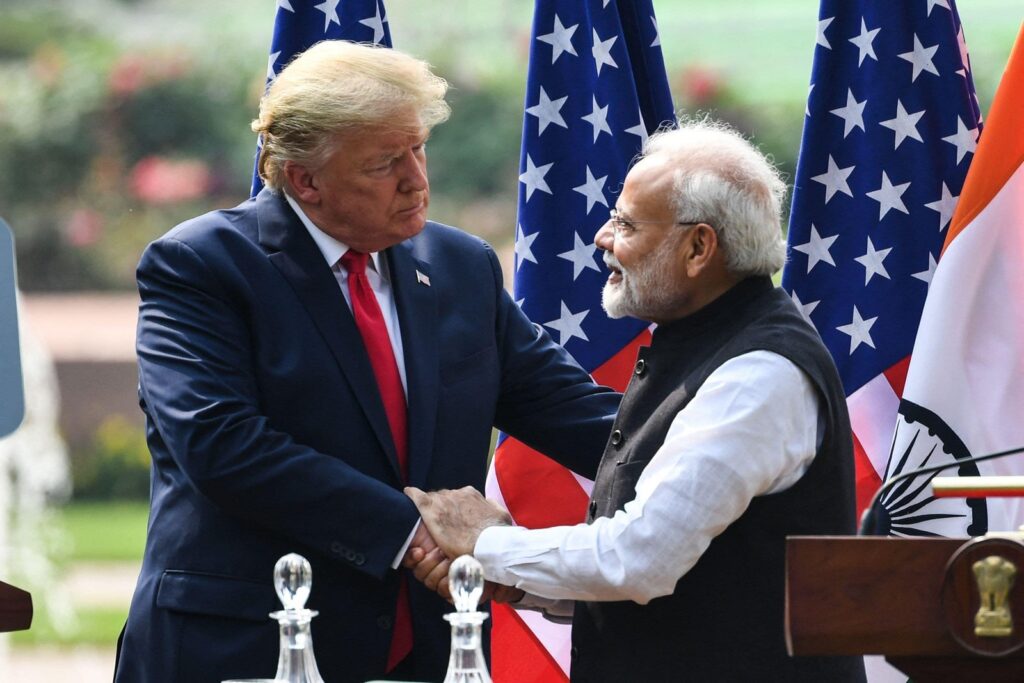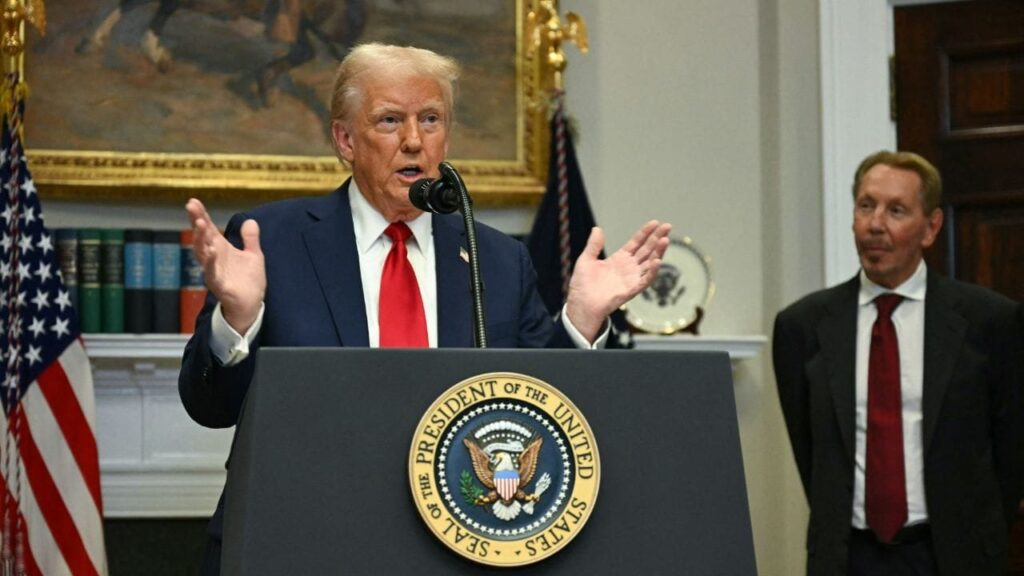April 3, 2025 – Dubai, UAE- President Donald Trump shook international trade patterns again with his announcement of broad reciprocal tariffs, an announcement of a new era of Trump reciprocal tariffs on UAE. Made in a White House Rose Garden ceremony on April 2, these Trump reciprocal tariffs on UAE seek to address what he refers to as decades of unfair trade policies by countries elsewhere. The new policy sets a baseline tariff of 10% on all imports, with much greater tariffs on countries with excessive barriers to U.S.-made goods.
This action, termed by Trump as a “declaration of economic independence,” will have profound effects on both the United States and its trade partners. Whereas its proponents praise it as bold action to rescue American industries, others are raising alarm over its potential impact on economic stability and higher prices for consumers.

What are Donald Trump’s Tariffs in Return?
Donald Trump reciprocal tariffs on UAE seek to balance trade by levying import duties proportionate to those imposed by others on United States goods. Trump emphasized in his announcement that other nations, including China, India, as well as the European Union, have taken advantage of America for many years with high tariffs and discriminatory trade practices.
Key features of the new Trump reciprocal tariffs on UAE plan are:
- A 10% baseline tariff on almost all foreign goods beginning April 5, 2025.
- Increased tariffs in countries with high trade barriers.
- India: 26
- China: 34
- Vietnam: 46%
- European Union: 20%
The policy specifically addresses certain industries, including steel, aluminum, autos, and semiconductors. Canada and Mexico are not covered because of prior agreements under the USMCA.
Trump Tariff Rates by Country
Country | New Tariff Rate | Previous Tariff Rate |
|---|---|---|
| India | 26% | Varies (Exemptions) |
| China | 34% | 20% |
| Vietnam | 46% | None |
| European Union | 20% | Varies |
| United Kingdom | 10% | None |

Effect of Trump reciprocal tariffs on International Trade
Donald Trump’s introduction of reciprocal tariffs has been met with diverse responses globally. While certain countries are hurrying to finalize trade agreements with America, others are laying plans to launch retaliatory measures against it.
Potential Economic Effects For the United States:
- Domestic producers can gain from less competition from overseas imports.
- Consumers will also end up paying more because import costs are higher.
For Trading Partners:
- India and China, among other countries with high tariffs, are likely to experience slowed exports to the U.S.
- Automotive, pharmaceutical, and information technology services are among the vital sectors to suffer greatly.

Global Economy:
- Economists warn of a potential global trade war if affected nations retaliate with their own tariffs.
- Supply chains may experience disruption as businesses transition to new cost structures.
India’s Response
India is also among the worst-affected countries, and its export of goods are now charged a tariff of 26%. The rate was justified by President Trump by asserting that India levied a whopping 52% tariff on American goods. Indian authorities downplayed this action as a “setback” but are studying how to counteract its effects.

- Industries such as auto production and IT services are especially exposed.
- Indian producers like Tata Motors have already posted declines in their shares after the announcement was made.
- The information technology industry remains in limbo with looming service tariffs.
Why Did Trump Enact These Tariffs?
Donald Trump has continuously criticized international trade policies he views as hurting American workers and industries. He promised in his campaign and presidency to prioritize an “America First” agenda by focusing on trade deficits and defending local job opportunities.
Trump declared in his April 2 address: “For too long, our taxpayers were taken advantage of by unfair trade practices.” He continued by explaining these Trump reciprocal tariffs would bring money into government coffers while making the level between American businesses and foreign rivals more level.

Key Takeaways from Trump Reciprocal Tariffs
- Global reactions range from negotiations to threats of retaliation.
- A universal 10% tariff will apply to most imports starting April 5, with higher rates for specific countries.
- Nations like China (34%) and India (26%) face steep penalties due to perceived trade imbalances.
- Canada and Mexico remain exempt under existing agreements.
- The move is expected to benefit U.S. manufacturers but could increase costs for consumers.
With these Trump reciprocal tariffs in place, all eyes will watch as world economies adjust to this dramatic change in trade policy. Whether this signals a new age of American prosperity or sets the stage for economic turmoil is unknown.
Also Read: Mumbai to Dubai Underwater Train: A Visionary Project to Revolutionize Travel

